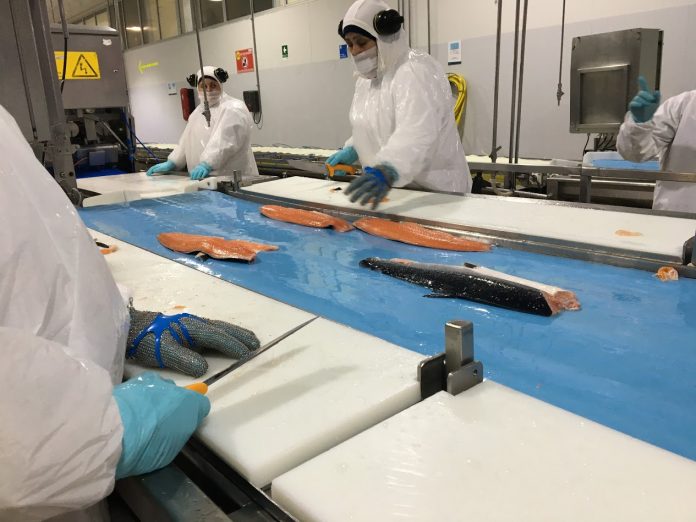Belgian company Pittman Seafoods, specialized in cutting of frozen fish, recently returned to Chile, for part of its raw material. “Farming methods and food safety have improved substantially since the ISA outbreak.”
“From 1997 until 2010, we had a lot of volume from Chile. However, because of the ISA outbreak in 2010, we couldn’t have raw material from Chile for a while. That’s when we started buying fresh salmon in Norway and the Faroer, and developed a partnership with our Polish processor, who can meet our requirements,” says Pittman’s CEO Yoke Vandepitte.
But after a difficult period, Chile is back in business again, she continues. “Farming methods have improved, as has food safety, with stricter regulations and more stringent control. That’s really a good thing, so we are happy to be buying in Chile again.”
Olympic minimum

Three years ago, the company started a joint venture with a processing company in Chile, Omega C-Foods. “Our Chilean partner is responsible for purchase and quality control of salmon, mussels and king crab. We are also distributor in Europe for Chilean salmon farmer, Ventisqueros, for salmo salar and ASC coho. The frozen salmon products supplied by Ventisqueros arrive in containers from Chile and go either directly to the buyer or are stocked in Zeebrugge.”
Pittman Seafood’s three business units are retail, food industry and foodservice, main products are salmon, pollack yellow fin sole, cod and lobster. Salmon accounts for 30 percent of the total production volume, and 40 percent of turnover, from sales and production, Vandepitte explains. “Alaska Pollack is biggest in volume, but farmed salmon is a very important product for our company. In addition, we also do 10 percent wild salmon from Alaska, and with Ventisqueros: mainly salmon filets, with and without skin.”
The market is changing rapidly, she continues. “Our price is an Olympic minimum, we have to be competitive. A lot of new players are entering the market, for example, recently Amazon.com, which will very likely have an impact on business. Consumers are also changing; they are more aware of health issues, which increases the need for transparency.”
Adapt to market changes

Pittman Seafood is production-driven. “40 percent of our turnover comes from our own production. The rest is trading with extras, like buying at origin from the right producers, quality control before and after transport, storage and financing.”
As a medium-sized company, Pittman has the advantage of being flexible, says Vandepitte. “We can easily adapt to market changes. Specialists are always needed, and as we are highly specialised in cuttings, there is definitely a target market for our activities. Therefore it’s important to target the right customers, who do have a match with our portfolio.”
The company’s location at Zeebrugge harbour is an advantage, says Vandepitte. “We are close to the veterinarian border inspection point, and we organise logistics from here, for all our products. Most of the containers arrive via Antwerp, because, unfortunately, there are not many lines to Zeebrugge anymore. So, we often use a feeder to transport the containers via inland waterways to Zeebrugge. This is also for sustainable reasons and to relieve road transport as much as possible.”
Competition from Asia a real threat
Competition is heavy and depends on product and market, says Vandepitte. “And because of globalisation, it could be a company from anywhere in the world, also from China. That is why we focus on added-value of our service: we do a lot more than buying and selling.

We take care of the customer by purchasing products that are hard to find. We are very proactive in buying raw material and creating buffers. We have very thorough product control, and take care of matters that are complicated for our both suppliers and customers, such as customs, import, regulations and specifications.”
Asia is a real threat as far as competition concerns, she adds. “That applies to all species we handle: the increase in demand for domestic markets pushes the prices up. At the seafood fair in Qindao, China, we learned that demand for salmon is increasing, and this leads to higher prices. Another new development in China is the local smoking of salmon, which will also probably grow in the future.”
Unexpected circumstances, like the algae bloom in Chile, led to price hikes, that made customers, especially in foodservice, turn to other, less expensive products, like cod, she continues. “That is really a pity, because salmon is a good and tasty product that works well in food service meals, because it doesn’t get dry and contains a lot of Omega3. When prices become too high, you lose customers, who may not come back. So a stable market is better for everyone.”
Read also: ‘As long as it’s square, we can cut it’

